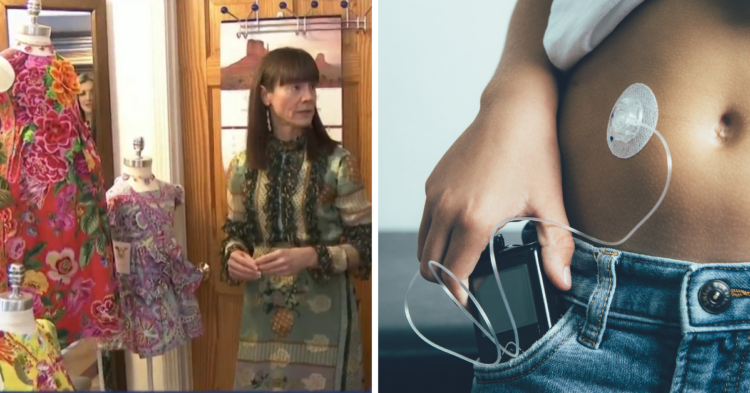When you think of diabetes, you often imagine test strips and avoiding sugary foods.
A lot of this is due to the lack of education about the condition, especially when it comes to the differences between Type 1 diabetes and Type 2.
Type 2 diabetes is by far the more common of the two.

While the pancreas can produce insulin, it is either not enough to keep the blood sugar regulated or the cells of the person’s body are resistant to it. This can lead to heart attacks or strokes if it isn’t managed carefully.
About 26 million Americans have been diagnosed with Type 2.

That accounts for as much at 95% of all diabetes cases in adults, and the numbers are only growing.
Obese people are more at risk for developing Type 2 diabetes, which accounts for the rising diagnoses.
Type 1 diabetes usually starts during childhood.

It is also called “insulin-dependant diabetes” because it requires regular doses of insulin for the person to survive.
Type 1 is an autoimmune condition that attacks the pancreas and prevents it from making insulin entirely.
This means the body is unable to control blood sugar levels on its own.
People with Type 1 need regular injections of insulin and thanks to modern medicine advancements, they now have a few different choices for how to receive them.
Depending on the person, their budget, and their day-to-day habits, one method could be better than another.
We’re probably all familiar with the idea of insulin being injected via syringes.

But these days there are also cartridge-based insulin pens, jet injectors, and pumps.
The pumps use a thin tube to send the insulin into the body from an external device.
In terms of keeping track of doses, a pump is really convenient.

You don’t need to set alarms or carefully measure your dosage. The pump does it for you.
But it does add the inconvenience of having a delicate device tethered to you at all times.
It can make choosing clothing tough, especially for girls.

Sure, you can stick the pump in a pocket or pouch and run the tubing under your shirt, but what about those girls who love to wear dresses?
Julie Christian found a solution when a little girl asked for a custom dress.
A former police officer, she had taken up sewing.

Christian intended to spend her second career making tailored suits for women, but then she met fifth-grader Julia Looker at an art show.
They chatted and Looker asked if Christian could make her a custom dress.
The girl had Type 1 diabetes and was hoping to get a dress made to contain and hide her insulin pump.

Christian took on the challenge.
The dress she designed has a pocket in the front to hide the pump and a small slit in the waist allows the tubing to reach underneath the dress to Looker’s leg attachment.
This means that Looker doesn’t need to wear bulky shorts under her dress.

Lots of girls and women wear snug shorts or leggings beneath dresses for modesty or comfort, but Looker didn’t have that choice. Shorts with pockets can cause weird bumps in the skirt’s folds.
Often, it probably seems easier to just avoid wearing the dress entirely.
For a young girl with a condition that already singles her out, being able to dress like any other person can be a big boost to self-confidence.
And it’s not just about young girls or everyday wear.

After hearing the story, one Facebook commenter shared how a family friend made sure her daughter’s wedding dress had a pocket to safety carry the pump without it being visible.
Other women chimed in about how they have avoided some clothing styles.

Hopefully, Christian’s idea take off and more designers begin creating outfits that allow women with Type 1 to wear whatever they want to.
It didn’t take long for other girls with insulin pumps to start wanting dresses of their own.

While it’s not the focus Christian imagined her business would have, she’s happy to have found her niche.
“It wasn’t women’s suiting as I anticipated; it was a whole different idea,” she told CBS Boston.
h/t: CBS Boston

















































